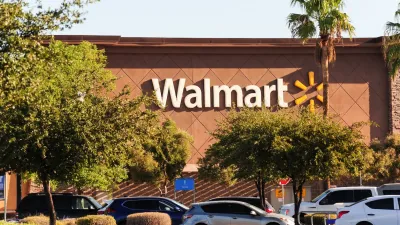Lynda Lopez argues that transit advocates should be immigrant allies during crackdowns.

Public safety is inherently tied to transportation. If people don’t feel safe on the streets, they don’t use the streets to walk, bike, or take public transportation. Lynda Lopez argues that in a time of vigorous immigration enforcement, transit advocates need should be allies to immigrants.
"As an example of how real the threat is, three children who are U.S. citizens who were traveling without their immigrant parents were held by border protection officers for 13 hours at O’Hare last week, which a local congresswoman called 'kidnapping of children by our government,'" Lopez writes in Streetsblog Chicago. This incident from a couple week ago has many feeling unsafe.
"Immigrants are a crucial segment of our society that is currently under attack, so as sustainable transportation advocates we need to deepen our understanding of the issues that impact the way they experience transportation," Lopez argues. To do this, Lopez suggests advocates encourage their agencies to release statements in support of immigrants, use transit stops as locations to educate immigrants about their rights, and encouraging transit agencies to voice their support for the immigrants in their communities and dispel rumors that could be keeping immigrant riders off buses and trains.
FULL STORY: How Transportation Advocates Can Be Allies During Immigration Crackdowns

Rethinking Redlining
For decades we have blamed 100-year-old maps for the patterns of spatial racial inequity that persist in American cities today. An esteemed researcher says: we’ve got it all wrong.

Planetizen Federal Action Tracker
A weekly monitor of how Trump’s orders and actions are impacting planners and planning in America.

Walmart Announces Nationwide EV Charging Network
The company plans to install electric car chargers at most of its stores by 2030.

Seattle’s Pike Place Market Leans Into Pedestrian Infrastructure
After decades of debate, the market is testing a car ban in one of its busiest areas and adding walking links to the surrounding neighborhood.

The World’s Longest Light Rail Line is in… Los Angeles?
In a city not known for its public transit, the 48.5-mile A Line is the longest of its kind on the planet.

Quantifying Social Infrastructure
New developments have clear rules for ensuring surrounding roads, water, and sewers can handle new users. Why not do the same for community amenities?
Urban Design for Planners 1: Software Tools
This six-course series explores essential urban design concepts using open source software and equips planners with the tools they need to participate fully in the urban design process.
Planning for Universal Design
Learn the tools for implementing Universal Design in planning regulations.
City of Moorpark
City of Tustin
City of Camden Redevelopment Agency
City of Astoria
Transportation Research & Education Center (TREC) at Portland State University
Regional Transportation Commission of Southern Nevada
Toledo-Lucas County Plan Commissions





























